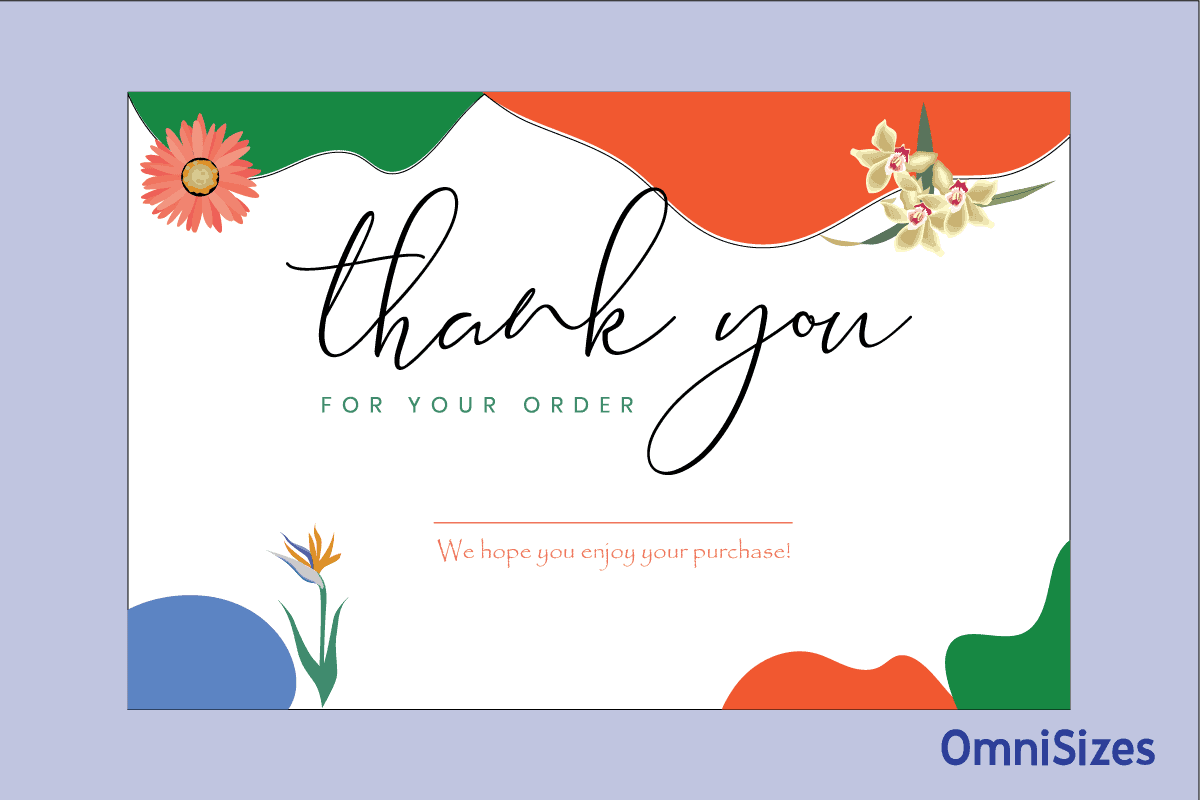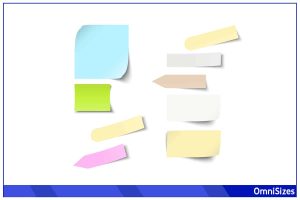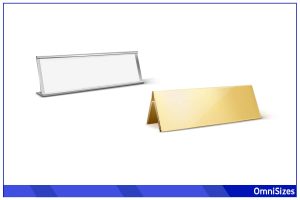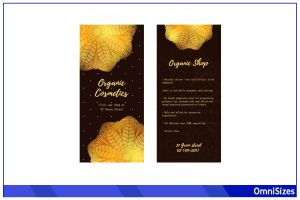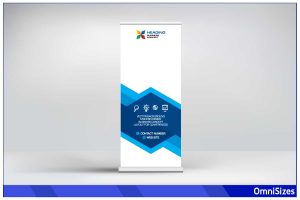Thank you card sizes can affect the way gratitude is presented. With the right size, a simple message can be transformed into a memorable gesture, making the recipient feel valued and appreciated.
The standard size for thank you cards is A2, measuring 4.25 × 5.5 inches (10.8 × 14 cm). Alternative sizes include A6 (4.5 × 6.25 inches or 11.4 × 15.9 cm) and A7 (5 × 7 inches or 12.7 × 17.8 cm), with options extending to unique shapes like square and panoramic cards.
The following sections will help you better understand thank you card sizes, from why it matters to how to customize your own designs.
Why Does Card Size Matter?
Selecting the right thank you card size can influence the entire experience of both the sender and recipient. Here’s why:
1. First Impressions
A card’s size often dictates the initial impact. Larger cards may appear grand, while smaller ones feel intimate. The right size can make your message stand out or fit perfectly in the hands of the recipient.
2. Content and Design Flexibility
Different sizes allow for varying content lengths and design elements. For instance, longer messages or photos might require bigger cards, whereas concise notes might be best suited for smaller dimensions.
3. Cost Implications
Printing and postage costs can vary with size. Larger cards can be pricier to print and mail, while smaller sizes might save on expenses.
4. Mailing and Handling
Consider the practicality of mailing. Standard sizes are typically easier to find envelopes for and fit standard postal requirements. Unique sizes might need special considerations for mailing.
5. Recipient Experience
A card’s size can affect storage. Some prefer compact cards that fit in wallets or on bulletin boards, while others appreciate larger sizes for display.
Standard Thank You Card Sizes

When expressing gratitude, choosing the right card size can elevate your message. Standard thank you card sizes have become popular because of their aesthetic appeal, functionality, and postal convenience.
A2 Size (4.25 × 5.5 inches or 10.8 × 14 cm)
One of the most commonly used sizes, A2 cards strike a balance between space and portability. They offer ample room for personalized messages and graphics while remaining compact. Being a favorite among many, they’re readily available in stores and come in various designs.
A6 Size (4.5 × 6.25 inches or 11.4 × 15.9 cm)
A tad larger than the A2, the A6 size provides a bit more space for those who prefer a longer message or a larger design element. It’s an excellent choice for thank you cards accompanied by photos or for those who enjoy a slightly more expansive canvas.
A7 Size (5 × 7 inches or 12.7 × 17.8 cm)
The A7 is for those who believe in making a grand gesture. Perfect for formal events like weddings or significant milestones, this size offers the most room for detailed graphics, collages, or lengthy heartfelt messages. They make a statement and are often kept as keepsakes because of their standout size.
Postcard Size (4 × 6 inches or 10.2 × 15.2 cm)
An alternative to the traditional folded thank you card, the postcard size is both trendy and practical. With a writable back and a graphic front, they’re a quick way to send a note of gratitude. Moreover, their uniform size means easy storage and often, lower postage costs.
Alternative and Unique Card Sizes
There’s always room for creativity and personal touch. Beyond the standard dimensions, alternative and unique card sizes offer a fresh way to send your appreciation.
Square Cards (5 × 5 inches or 12.7 × 12.7 cm)
Breaking away from the usual rectangular format, square cards are a trendy choice. Their symmetrical design provides a modern twist, making them perfect for contemporary events or brands. While they stand out, remember they might have different postage requirements due to their shape.
Panoramic Cards (4 × 8 inches or 10.2 × 20.3 cm)
With a lengthened design, panoramic cards are visually striking and perfect for showcasing landscape photos or designs. They’re especially popular for events like graduations or travel thank you notes, capturing wide-angle memories beautifully.
Mini Cards (2 × 3.5 inches or 5.1 × 8.9 cm)
Compact and charming, mini cards are perfect for short, sweet messages. They fit easily into pockets or wallets, making them memorable keepsakes. They’re often used for business events or as tags attached to gifts.
Circular Cards
Going round is not a common choice, but it’s an impactful one. Circular cards are especially effective when the design complements the shape, such as floral motifs or seals. They’re memorable but might require special envelopes or packaging.
Die-Cut Cards
Die-cut cards are custom-shaped, often tailored to specific themes or logos. For instance, a heart-shaped card for Valentine’s Day or a house shape for new homeowners. While they offer unparalleled customization, they can be more expensive due to the specialized cutting.
Tips for Customizing Card Sizes
Personal touches make thank you cards even more special. A well-designed thank you card leaves a lasting impression. Here are some pointers to craft a memorable card:
- Consistency is Key: Maintain a consistent theme throughout the card. Whether it’s color schemes, fonts, or graphics, uniformity makes the card visually appealing.
- Use High-Quality Images: If you’re including photos or graphics, opt for high-resolution images. This prevents them from appearing pixelated or blurry when printed.
- Space Out Your Content: A cluttered card can be hard to read. Use spacing effectively to separate your message, images, and other design elements. This enhances readability and aesthetics.
- Color Matters: Colors evoke emotions. Soft pastels might convey calm appreciation, while bolder shades can exude excitement and joy. Choose colors that match the mood of your message.
- Font Selection: Pick fonts that are easy to read and match your card’s tone. While cursive fonts might suit formal thank you notes, simpler fonts are apt for casual messages.
- Incorporate Personal Elements: This could be a handwritten note, a personal photo, or even a doodle. These touches make the card feel personal and heartwarming.
